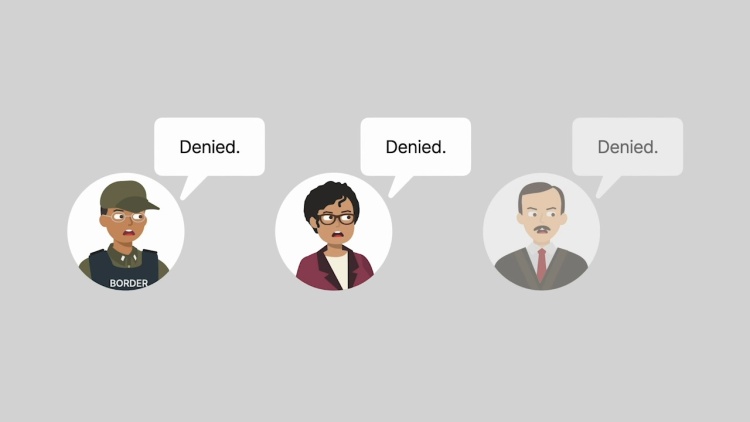Department of Homeland Security v. Thuraissigiam
United States Supreme Court
140 S. Ct. 1959 (2020)
- Written by Angela Patrick, JD
Facts
Sri Lankan national Vijayakumar Thuraissigiam (defendant) crossed the southern border of the United States. The border patrol stopped Thuraissigiam 25 yards inside the border for unlawful entry. Under the Illegal Immigration Reform and Immigrant Responsibility Act (IIRIRA), Thuraissigiam was set for expedited removal from the United States. To avoid removal, Thuraissigiam applied for asylum, claiming he feared returning to Sri Lanka because he had been abducted and beaten there. The asylum officer believed Thuraissigiam. However, the officer denied the asylum claim because Thuraissigiam did not fear persecution based on membership in a group that asylum protects. The supervising asylum officer also rejected Thuraissigiam’s claim. An immigration judge affirmed. Thuraissigiam petitioned for a writ of habeas corpus in federal court, alleging, for the first time, that he feared persecution due to his political views and Tamil ethnicity. In the petition, Thuraissigiam asked the court to give him a new chance to seek asylum based on his new credible-fear allegations. Thuraissigiam did not ask to be released from custody. IIRIRA prohibited any judicial review of credible-fear determinations, including habeas corpus petitions. The district court dismissed the petition. The Ninth Circuit reversed, ruling that IIRIRA’s prohibition on habeas petitions both unconstitutionally suspended the writ of habeas corpus and violated asylum seekers’ constitutional right to due process. The United States Supreme Court granted certiorari.
Rule of Law
Issue
Holding and Reasoning (Alito, J.)
Concurrence (Thomas, J.)
Concurrence (Breyer, J.)
What to do next…
Here's why 899,000 law students have relied on our case briefs:
- Written by law professors and practitioners, not other law students. 47,000 briefs, keyed to 994 casebooks. Top-notch customer support.
- The right amount of information, includes the facts, issues, rule of law, holding and reasoning, and any concurrences and dissents.
- Access in your classes, works on your mobile and tablet. Massive library of related video lessons and high quality multiple-choice questions.
- Easy to use, uniform format for every case brief. Written in plain English, not in legalese. Our briefs summarize and simplify; they don’t just repeat the court’s language.





